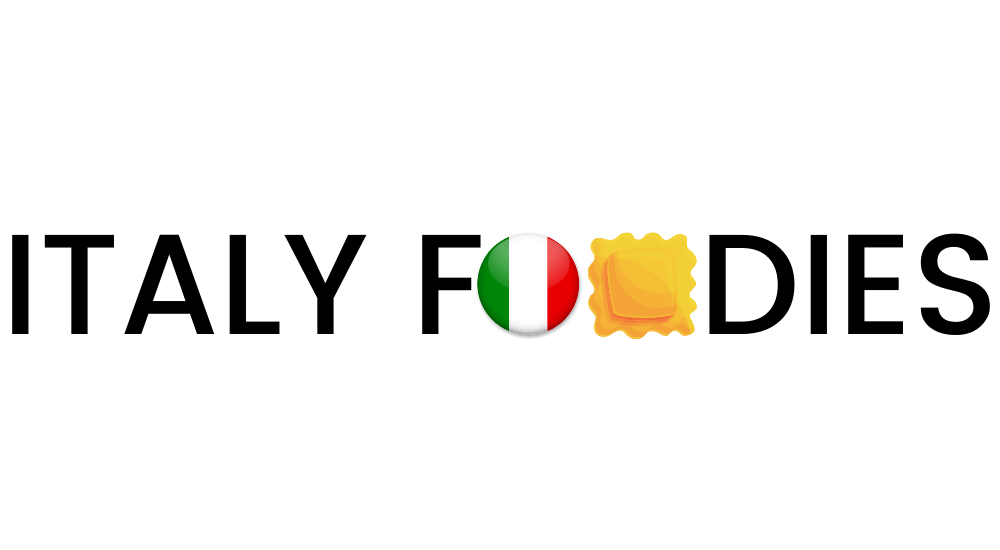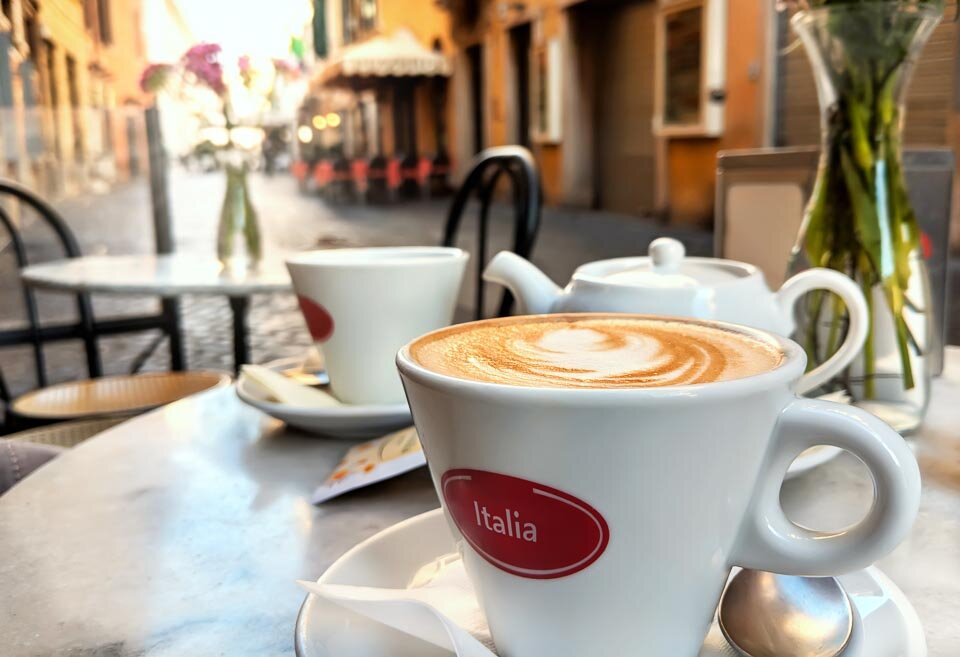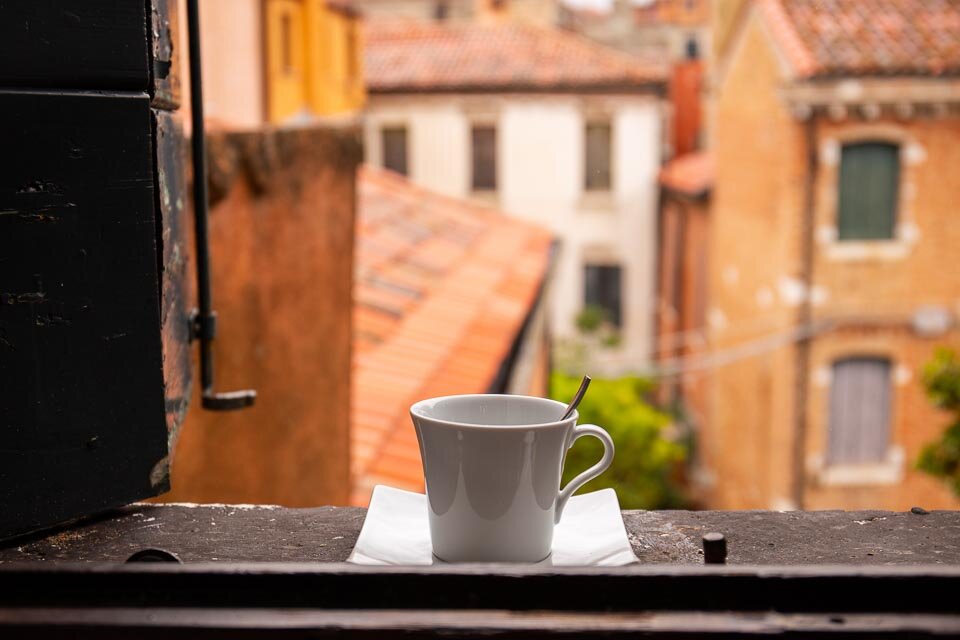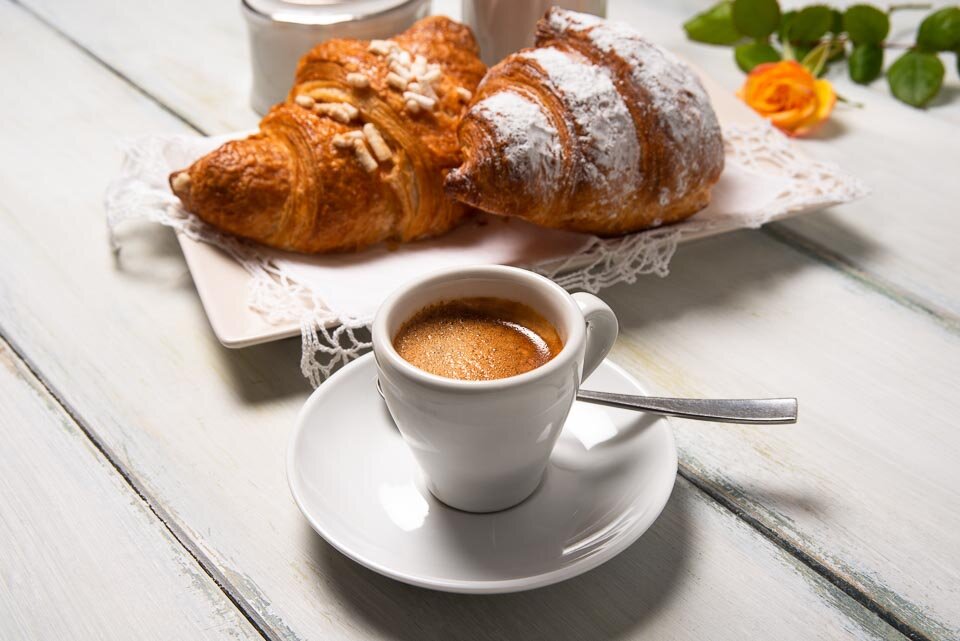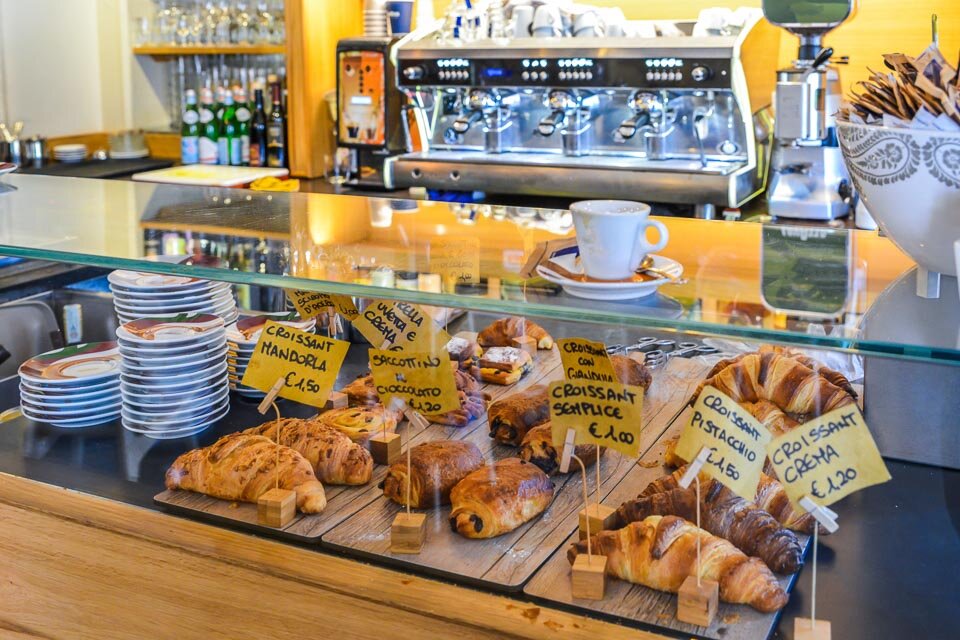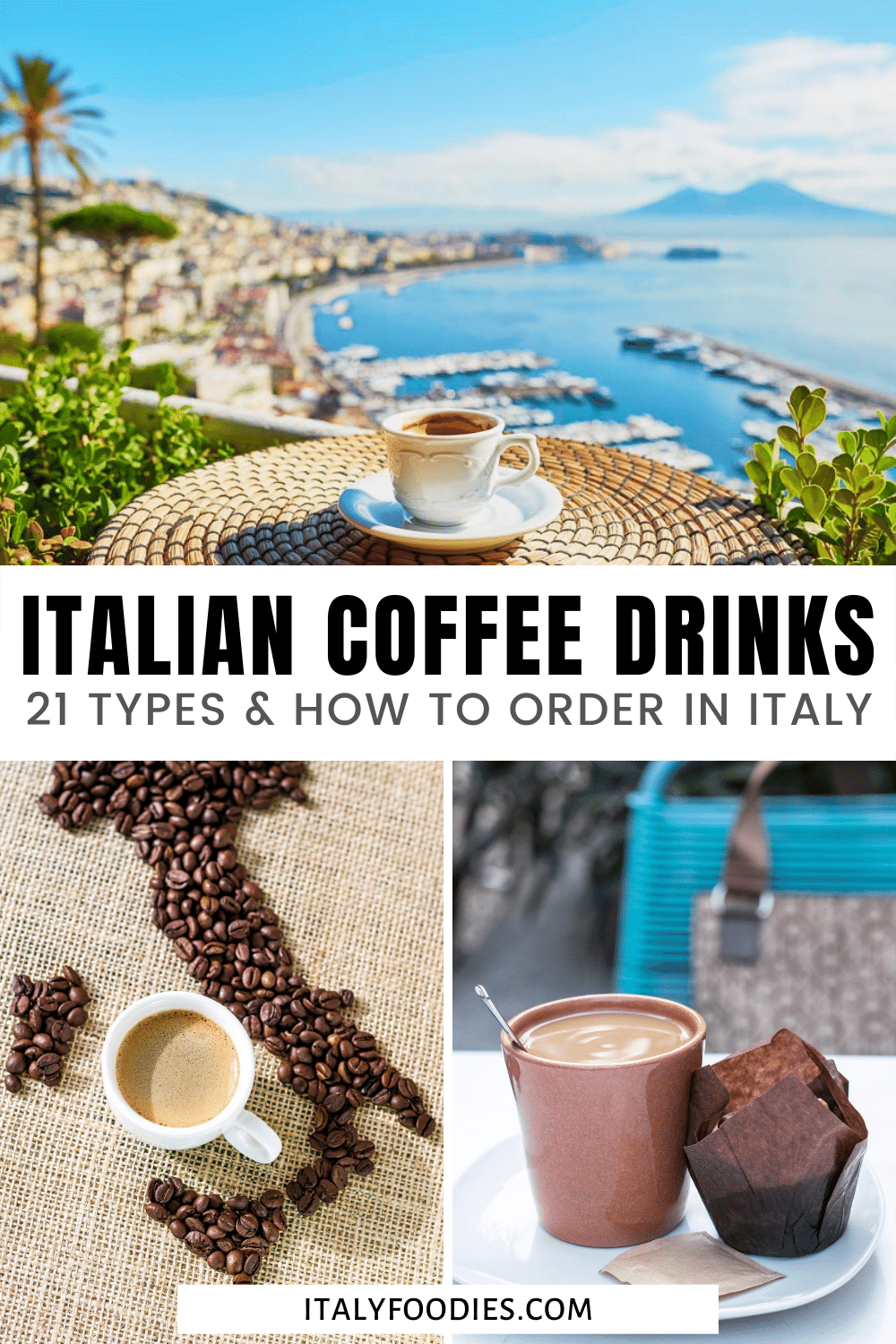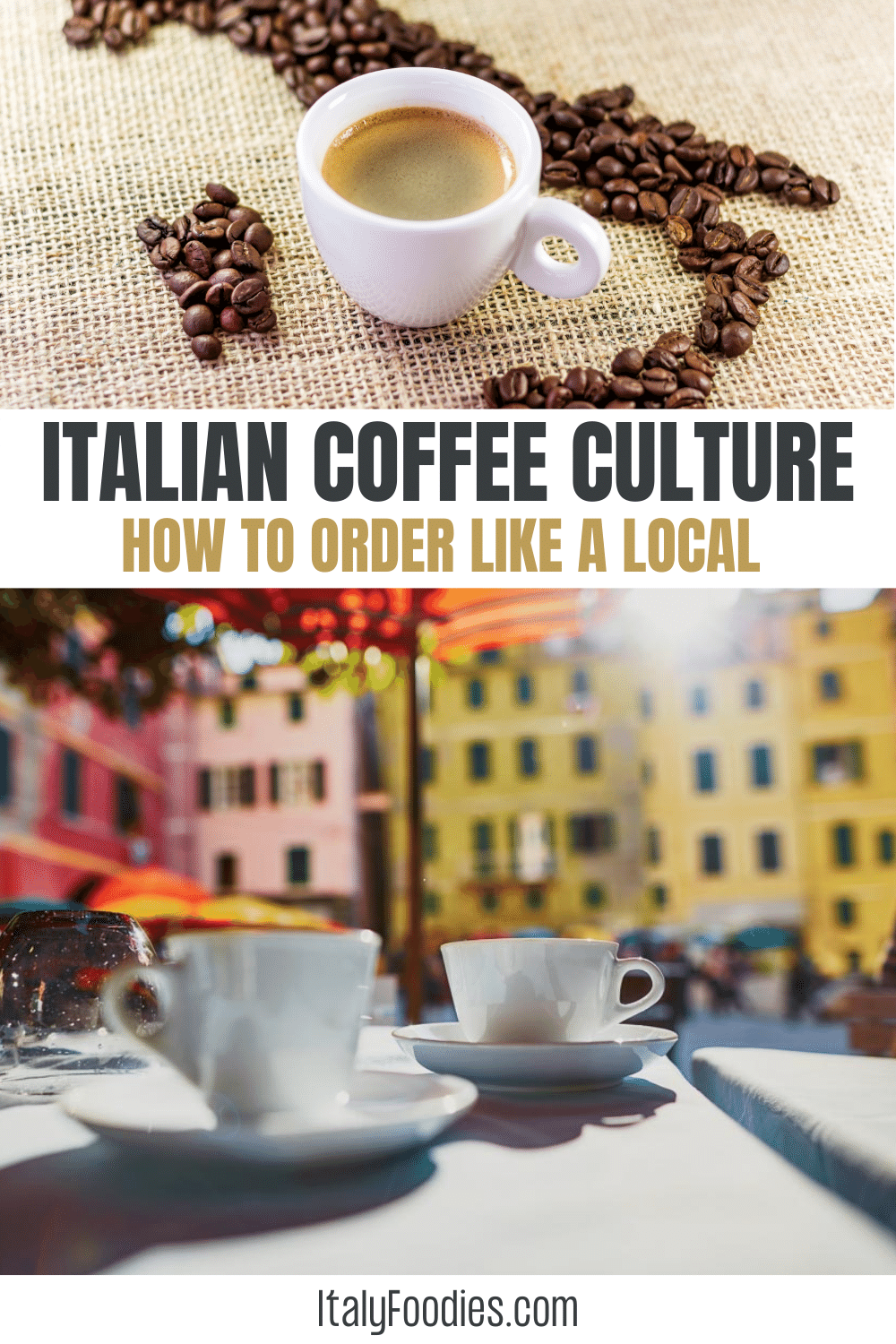Coffee Culture in Italy: 21 Types of Drinks and How to Order Like a Local
The coffee culture in Italy has existed since coffee beans were first introduced to Italy way back in the 1500s. It’s almost as much a part of the culture as Italian food! Since then, Italians have perfected the arts of making and drinking coffee.
With so many types of coffee in Italy (fun fact: there’s over 21 Italian coffee drinks listed here alone) how can this daily ritual not be perfection?
Italians enjoy coffee throughout the day, often as a break from work. You’ll hear the familiar Italian phrase “Ci prendiamo un caffè?” in the middle of the day, a sign that it’s time to take a break for some espresso or coffee.
Nearly every coffee drinking experience takes place in the company of friends, family, or even just welcoming strangers. It’s a social event.
There’s lots to learn about Italian coffee culture, including when to drink it, what to order, and especially how to order coffee in Italy. And we’re here to help. If you’re looking for a quick guide to coffee in Italy, this guide is sure to help.
This post may contain affiliate links. If you make a purchase through our links, we may earn a small commission, at no extra cost to you.
What’s in this Article:
Coffee Culture in Italy
20 Types of Italian Coffees
Regional Variations on Italian Coffee Drinks
How To Order Coffee in Italy
Final Tips and Coffee Etiquette
Coffee Culture in Italy
When Do Italians Drink Coffee in Italy?
Nearly every block in the city will have an Italian coffee bar as Italians drink coffee several times throughout the day usually with Italian breakfast pastries or sometimes with an Italian breakfast sandwich.
First, there’s the morning cup of coffee with breakfast. This is typically a milkier type of coffee, such as a Cappuccino, a Latte Macchiato, or a Caffè Latte.
Italians don’t drink any coffee drinks made with milk after about 11 o’clock in the morning.
Turns out, they’ve stumbled upon the science behind consuming milky drinks with their main meals. Milk can slow down digestion and sometimes cause a bit of gastric distress when eaten with a meal that’s heavier than a typical Italian breakfast.
Some of the best Italian coffee is the afternoon cup of joy, which is perfect for a midday pick-me-up. It’s important to note that most Italians don’t get anything stronger than a caffè (also known as an espresso). If that’s not enough of a caffeine boost for you, you’ll simply want to make another trip to your favorite barista.
Last but certainly not least, Italians like to enjoy a cup of coffee after the dessert course as well. This is a great way to unwind and take a moment to enjoy your fantastic day, meal, and company.
When dining out don’t expect your coffee to come out before or with your dessert like in the US. In the Italian coffee culture, it is only served after dessert.
Where Do Italians Drink Coffee?
But there’s more to the coffee culture in Italy than just the time of day. There’s also the location.
To get the best coffee in Italy, you’ll actually want to head to an Italian coffee shop, which is more like the neighborhood bar.
Then, as you sip on your coffee drink of choice, simply relax at the counter and enjoy conversation with the people around you.
Enjoying your Italian coffee at the bar is the more popular option, but if you plan on staying a while you can also have your coffee at a small table.
That said, this is a relatively rare practice, and it typically only takes place in touristy areas.
The Moka Pot
Did you know that 90% of Italian households own a Moka pot? The Moka pot is a stove-top coffee maker, think percolator. It was originally invented in 1933, and no Italian home would be without one.
This coffee maker essentially uses pressure from the boiling water in the lower chamber of the pot to force hot water through the coffee grounds into the upper chamber.
It doesn’t extract as much flavor as an espresso machine, but is still a great cup of espresso.
As if the Moka pot’s ubiquitous nature wasn’t enough to show its place in Italian culture, this special coffee maker also boasts quite a few unique awards.
According to the Guinness Book of World Records, the Moka pot is the world’s most popular coffee maker, and that’s saying something given the myriad of coffee makers available in today’s market.
For all of those reasons, this particular coffee machine has also found its way into some of the most famous museums in the world, including the Cooper-Hewitt Smithsonian Design Museum and the Museum of Modern Art.
Moka pots simply make great coffee and great gifts from Italy too!
Two of our favorite Italian coffee brands to try in your pot are Lavazza and Iily!
The ubiquitous Moka Pot, an important part of the coffee culture in Italy
The Cuccumela
Every Neapolitan coffee-lover knows what a cuccumela is, and I couldn’t write an article about Italian coffee without mentioning it — my grandparents would be proud.
The thing is (and I hate to disappoint them), I never knew it was called a Cuccumela.
I’d seen the pot in their pantry and always called it the drip coffee pot.
But it’s a tradition in Napoli, and it makes amazing coffee. Plus, the pot is pretty cool too, and you can still buy them on Amazon:
This guy on YouTube shows how to make the perfect Cuccumela, and his Italian Nonna would be proud. What I wouldn’t give to have the coffee pot my grandparents used!
21 Popular Types of Italian Coffees
1. Caffè
An Italian espresso coffee is ordered simply as a “caffè” which would be ordered as an espresso just about anywhere else in the world besides Italy.
This Italian espresso is a coffee staple that is enjoyed at all hours of the day.
2. Caffè Doppio (Double Espresso)
If you’d like a little more coffee in your cup, order a Caffè Doppio, simply a double espresso shot that will really get you charged up.
3. Cappuccino
The cappuccino is arguably the most popular type of coffee drink in Italy that includes milk, made with equal parts Italian espresso, steamed milk, and milk foam.
Since cappuccinos have quite a bit of milk, Italians only drink this particular type of coffee in the morning.
In fact, if there’s one thing that will make you stand out as a tourist to Italians, it’s ordering a cappuccino after noon (ish)!
There are a few cappuccino variations in Italy, including Cappuccino Chiaro which has more hot milk and less foam, Cappuccino Secco made with just frothed milk, and Cappuccino Scuro which has less milk and more coffee than the others.
Depending on your preference you can increase or decrease the amounts of coffee and milk.
There is also Cappuccino Freddo, an iced cappuccino generally found only in the summer.
4. Caffè Macchiato
There are two types of macchiatos in Italy, and you’ll definitely want to specify which one you want. If you’re looking for something strong, opt for a caffè macchiato.
This drink is basically an espresso with a splash of warmed milk.
5. Caffè con panna (Espresso with Whipped Cream)
Caffè con panna in Italy is one of the best coffee drinks in Italy for those with a sweet tooth, as it’s served with a full dollop of homemade whipped cream!
Made with a shot of espresso, it’s a favorite of many coffee drinkers.
There’s just something about the way the heavy whipped cream melds with the strong espresso — it’s a fun Italian coffee drink.
TIP:
It’s never considered rude and perfectly normal to ask if the whipped cream is fresh in case that’s what you prefer. Cool whip? Don’t even ask.
6. Latte Macchiato
The other Italian macchiato option is a latte macchiato. This is essentially the exact opposite of a caffè macchiato.
Rather than an espresso with a splash of warmed milk, a latte macchiato is warmed milk with a splash of espresso.
A macchiato is the one coffee drink with milk that you can order after 11am without raising any eyebrows!
7. Caffè Latte
This milky drink is the perfect morning coffee and beloved by Italians and tourists alike.
You don’t want to order a simple “latte” in Italy, however, as “latte” means milk. If you try doing that, you might end up with a glass of milk instead of the delicious coffee drink that you were hoping to enjoy.
Instead, you’ll want to order a caffè latte.
It is important to note that an Italian caffè latte will likely be smaller than the latte that you’re used to in the US.
8. Caffè Ristretto
A caffè ristretto is basically a stronger version of a caffè. It’s made with the same amount of beans used to make a single shot of Italian espresso, but only half of the water!
This drink is basically only one sip, so it’s perfect if you’re in a rush but still want a quick boost.
9. Caffè Shakerato
Calling all iced coffee lovers! This is the Italian coffee drink for you. Caffè shakerato, which translates to “shaken coffee,” is exactly what it sounds like. The talented baristas get some espresso and shake it with ice in a cocktail shaker.
To round out the cocktail-like feel of the drink, the caffè shakerato is served in a martini-style glass. Italians typically enjoy caffè shakerato as is, with a bit of sugar, or even with a splash of Amaro Averna, a dark bitter liqueur.
The one downside to the caffè shakerato is that it’s typically only served during the warmer months.
So if you find yourself in Italy in the summer, you’ll definitely want to try a caffè shakerato while you have the chance.
10. Caffè Ginseng
If you’re both a coffee lover and a tea lover, caffè ginseng may be the perfect type of Italian coffee for you. Caffè ginseng is an Italian espresso mixed with ginseng root extract. It has an unusual nutty flavor you’ll either love or not.
11. Caffè d’Orzo
Caffè d’Orzo is one of the most unique types of coffee in Italy. As a matter of fact, it doesn’t include any coffee.
Instead, it is made from barley, which is sometimes used as a coffee substitute in Italy.
12. Marocchino
A marocchino is sort of like a dessert coffee drink. With a shot of espresso, a few dashes of cacao powder, and a layer of foam, it is absolutely delicious. And this drink looks just as good as it tastes!
A marocchino is often just served in a glass and topped off with a sprinkle of cacao powder.
Since so many Italians love marocchinos, there are quite a few variations of this Italian chocolate coffee drink.
Some versions of the marocchino include hot chocolate powder, cinnamon, and even Nutella!
13. Caffè Lungo (Long Espresso)
Caffè Lungo is one of the less popular types of coffee in Italy, like a Caffè Americano but a stronger version.
Like an Americano, a Caffè lungo is made with espresso and hot water. But while an Americano has a splash of hot water added at the end, a Caffè Lungo uses the same water that has already run through the coffee grounds.
It’s a small, but impactful change.
14. Caffè Americano
A Caffè Americano is simply an espresso with a splash of water added after brewing that makes it less strong. Contrary to what many Americans might think, it is not a typical brewed cup of American-style coffee.
15. Caffè Corretto
Caffè corretto, or “corrected coffee”, is any type of coffee in Italy that also adds a splash of alcohol! This can be anything from grappa, brandy, rum or annisette.
Regional Variations on Italian Coffee Drinks
16. Caffè Anisette (Le Marche)
Caffè Anisette is an espresso-based coffee drink that is thought to have originated in the Le Marche region of Italy.
This Italian coffee drink is actually an example of Caffè Corretto, as it includes anisette, an anise flavored liqueur.
17. Caffè d’un Parrinu (Sicily)
Caffè d’un Parrinu is quite the special coffee treat. This cappuccino-esque drink can only be found in southern Sicily, and it boasts bold cinnamon, clove, and cocoa flavors.
18. Bicerin (Piedmont)
A bicerin may sound medicinal, but it is the traditional hot drink native to Turin, one of Italy’s most famous chocolate cities. This unique coffee drink is made with espresso, Italian drinking chocolate, and milk served layered in a small glass.
19. Patavina (Veneto)
Patavina originated in the 19th century in the city of Padua in the Veneto region. For a while, it was actually only enjoyed by intellectuals and politicians.
The second you sip on a cup of Patavina coffee, you’ll be surprised by the burst of mint flavor. While there are also notes of cocoa, cream, and espresso, the mint syrup is what makes Patavina stand out from the other coffee drinks in Italy.
20. Moretta di Fano (Le Marche)
While most coffee drinks give you a burst of energy, Moretta di Fano doesn’t necessarily do so. Why, you ask? Well, because Moretta di Fano is a type of Caffè Corretto. In addition to the espresso, Moretta di Fano also includes splashes of anise liqueur, brandy or cognac, and rum!
Flavored with lemon peel and sugar, Moretta di Fano is often enjoyed as an after-dinner drink. Typically it is served in a small glass, so drinkers can see the layers of coffee and alcohol.
21. Caffe ‘Allo Zabione (Bologna)
This unique regional coffee drink has been enjoyed by foodies in Bologna for centuries, and is a mix of espresso and zabaglione. We first tried it on a food tour in Bologna and went back a few more times to try it again.
The same sweet zabaglione wine custard that’s usually reserved for dessert. The coffee blends with the sweetness of the egg, sugar, and the touch of wine, for a truly unique Italian coffee drink.
21. Granita di Caffè (Sicily)
If you’re visiting the island of Sicily, you’ll find another noteworthy regional coffee variation. Granita di caffè, is a type of cold coffee drink that is the perfect way to cool down on hot summer days in Sicily.
Granita is a semi-frozen dessert rather like a sorbet but smoother. And Granita di Caffè is essentially a coffee slushie of sorts made from granita, espresso, a bit of simple syrup, and topped with whipped cream.
You’ll sometimes find it as a parfait layered with whipped cream. It’s absolutely fantastic!
Most Sicilians enjoy a cup of granita di caffè with a snack of Brioche col Tuppo, one of Sicily’s favorite breads.
How To Order Coffee in Italy
How to Order Coffee in Italy
Ordering coffee in Italy can be easy if you just need know the basics. The easiest way to order coffee in Italy is to simply ask for, “Un caffè per favore.”
This translates to “a coffee please,” and you’ll get a lovely cup of espresso – or caffè.
If you’d like one of the other coffee drinks listed in this article above, don’t worry. You simply swap out the word “caffè” with your drink of choice.
For example, if you’d like a cappuccino instead of an espresso, you can say, “Un cappuccino per favore.”
And if you’d like to change the number of coffees, that’s not a big deal either. If you want two coffees instead of one, you can ask for, “due caffè per favore.” The word “caffè” doesn’t change in any way based on the number that you ask for.
How to Pay for Coffee in Italy
The coffee-ordering process does become a little unfamiliar when it comes to payment. Instead of ordering your coffee, paying for it, and then enjoying it, the order is switched around a bit.
In Italy, you’ll order your coffee, enjoy it, and then pay for it afterwards.
Most coffee shops will give you a piece of paper with your order with some shorthand version of your order on it. You’ll want to hold onto this paper until you pay for your drink.
Occasionally, some coffee shops will function on an honor-based system, where there aren’t any paper chits.
Instead, after you’ve finished your coffee, you’ll simply tell the barista what you drank and pay for it.
How to Drink Coffee in Italy — Etiquette and Tips
When it comes to drinking coffee in Italy, there really are a few rules you should remember. You know, when in Rome and all that…
Unless you really don’t mind being that tourist, we always like to stick to the unwritten local guidelines when it comes to the local culture, and you might want to as well.
Perhaps the biggest misconceptions around ordering coffee in Italy, is that Italians don’t typically sit down at a table to drink their coffee.
Rather, they simply stand at the coffee bar while chatting with those around them.
So if you’d like to fit in like an honorary local, check out what’s happening around you and follow suit.
Final Tips and Etiquette
Here are some final tips and etiquette you should follow to about Italian coffee etiquette — the how, what, and when to order coffee in Italy:
Most places where you order coffee in Italy are known as a bar. Far from the liquor-type bars found in the US, these are simply coffee, or caffè bars.
Coffee is also normally enjoyed at the bar, not “al passegio” or to go. Don’t be surprised if you get a vacant look if you ask for a carry-out. Most Italians spend a few minutes enjoying their coffee or coffee drink at the counter, and then leave.
Remember, pay for your coffee first, then go to the counter to order.
There are no sizes for coffee in Italy, especially supersize. This isn’t McDonalds. Every drink has its own specific kind of cup or glass.
There are often two prices in caffé bars: al banco price at the counter, and al tavolo price at a table. Having it at the table implies a certain level of service in addition to the bar.
A glass of water typically accompanies your coffee in Italy, and it’s meant to cleanse you palette. It’s refreshing, and the local custom. Water first, coffee second, then water to finish (or not, it’s personal preference).
For your Caffè Latte, don’t forget to use both words. Italians don’t understand the term latte on its own, which usually means a glass of milk.
Part of the experience of of enjoying the coffee culture in Italy is enjoying the social atmosphere of an Italian coffee bar.
Don’t be shy. Italians love to chat.
So stay and take your time sipping your coffee drink and chat with your fellow coffee lovers.
